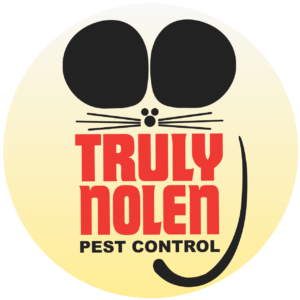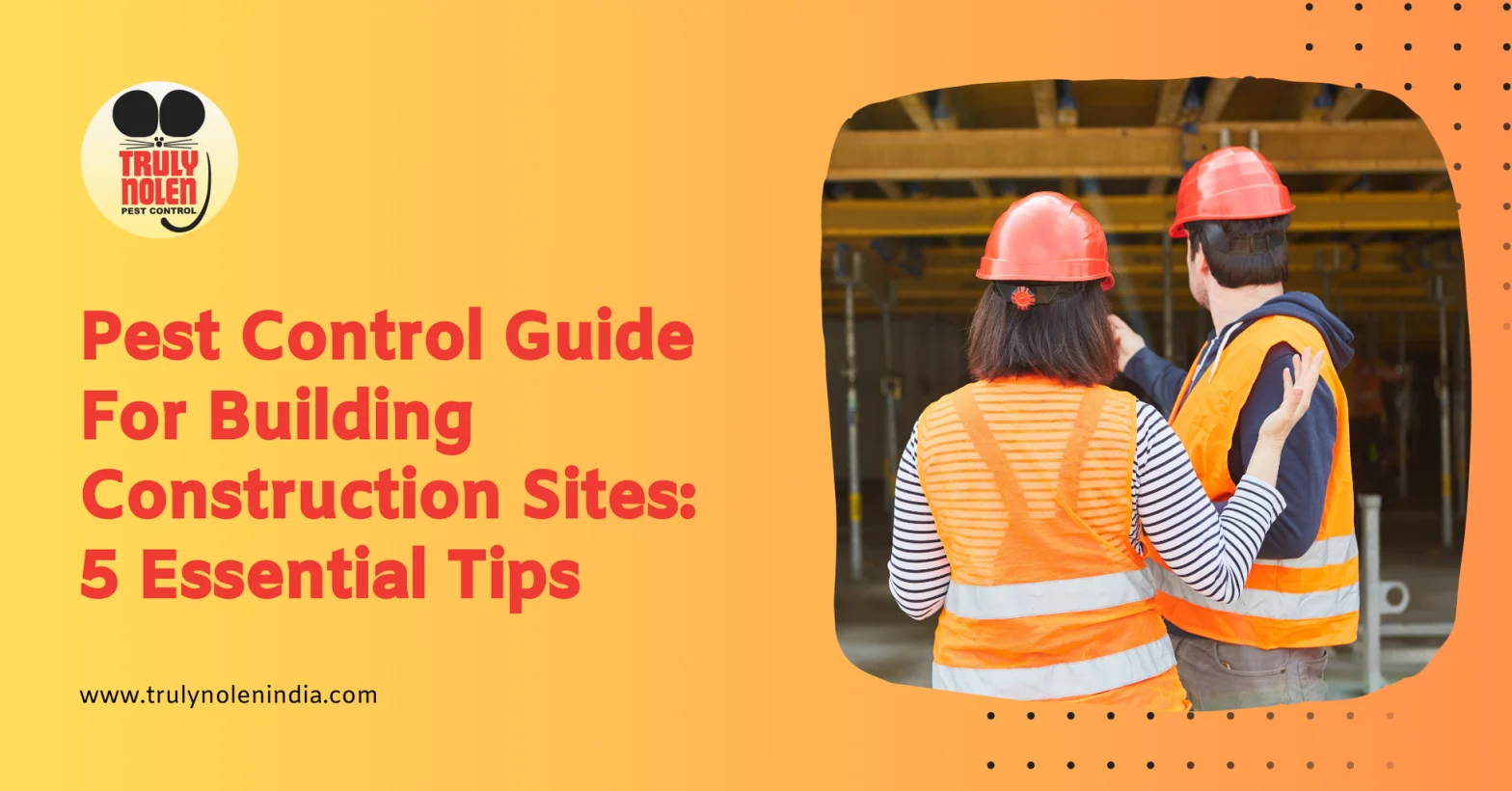Construction sites are like magnets for pests like bugs and rats, which can be a problem for both the project and the construction workers. Especially with all the food scraps, hidden corners, and heaps of materials – these places become a perfect home for pests. If we ignore them, they can create many problems for the people working there.
But don’t worry! There are ways to keep them at bay and ensure the construction work goes smoothly. Let’s look at the pest control guide for building construction sites to keep your site free from these infestations.
Pest Control Guide for Building Construction Sites: 5 Tips to Keep Pests Away
Ensuring construction sites remain clear of unwanted creatures is vital for both safety and project efficiency. Our “Pest Control Guide for Building Construction Sites” offers five straightforward tips, from securing food to raising worker awareness and ensuring a clean and efficient work environment.
1. Secure Food and Waste Properly

Construction sites are bustling hubs of activity. Amid the workers, machinery, and materials, it’s easy to overlook these tiny pests. Several factors can lure pests into the construction zone, whether the scent of a worker’s lunch, the residue from construction materials, or an overfilled garbage bin. Their presence not only compromises the health and safety of the workers but can also hinder the project’s progress.
- Prioritize Proper Food Storage
Workers’ lunch leftovers and food wrappers can quickly become an open invitation for pests. To prevent this, ensure that all food items, from snacks to meals, are stored in sealed containers. This protects the food from pests and environmental factors like dust and rain commonly found at construction sites.
- Implement Regular Waste Management
Regularly empty and clean trash bins. Overfilled garbage bins become a hotspot for pests like rats, flies, and cockroaches. By maintaining a schedule for waste removal, you can mitigate the risk of infestation. Consider using bins with tight-fitting lids to minimize the chances of pests accessing the waste.
- Strategically Place Dumpsters
Dumpsters should be positioned at a good distance from the main construction site. This makes it less likely for pests attracted to the dumpster to migrate towards the work area. Additionally, ensure that the dumpsters have lids and are closed securely after every use.
- Regularly Inspect for Leftover Materials
Surprisingly, not just food but also certain construction materials can attract pests. Materials like adhesives, paints, or organic materials might emit odors or residues that can be attractive to pests. Regularly inspect the site for spilled or improperly stored materials and clean or store them appropriately.
- Raise Awareness Among Workers
Educate the site workers about the importance of proper food and waste management. Encouraging habits like cleaning up after meals, disposing of waste properly, and immediately reporting any signs of pests can play a vital role in ensuring a pest-free construction site.
2. Regular Site Cleanup

A tidy construction site is safer, more efficient, and less inviting for pests. Piles of wood, debris, or standing water can be attractive breeding and nesting grounds for many unwelcome creatures. Here’s a detailed breakdown of how to maintain a clean site:
- Routine Inspections
Assign dedicated personnel to carry out daily or weekly inspections, depending on the size and nature of the site. This ensures potential problem areas are identified promptly.
- Wood and Debris Management
Store wood off the ground on elevated platforms or racks to reduce the chances of it becoming a haven for pests. Debris should be collected and disposed of at the end of each working day. Regular clearing prevents pests like termites, rats, and certain insects from establishing a foothold.
- Water Drainage and Management
Due to their ever-changing nature, construction sites can inadvertently create pockets where water collects. Regularly inspect the site for such accumulations, especially after rain. Implement proper grading to ensure water flows away from the site. Install temporary drains or sump pumps if necessary.
- Stagnant Water Watch
Pools of stagnant water are magnets for pests like mosquitoes that can spread diseases. Any area where water stands for more than a day should be addressed immediately. If the site has features like trenches or pits, they should be checked and cleaned regularly.
- Materials Storage
Store construction materials properly. Materials left scattered around can create hiding spots for pests. Organize them neatly and cover them with tarps or protective covers if they are to be left outdoors for extended periods.
- Equipment Maintenance
Ensure equipment like water tanks or machinery doesn’t have leaks. Puddles formed by leaks are perfect breeding grounds for pests.
3. Use Pest-Resistant Building Materials

When constructing any structure, the materials used can significantly impact its susceptibility to pests. Making informed decisions during the foundational stage of construction can prevent potential infestations, saving both time and money.
- Material Choices
Treated wood, especially those treated with borates, can repel termites and other wood-boring insects. Moreover, materials like metal, stone, and certain hard plastics are inherently resistant to many pests. Wherever appropriate, integrate these into your construction plans.
- Sealant is Crucial
Beyond the bigger gaps and cracks, tiny open spaces in the construction can provide entry points for pests. Using high-quality sealants and caulks can ensure these gateways are blocked off. It’s essential to recheck and reapply these sealants, as they can wear out over time.
- Mesh and Screens
Consider using fine mesh or screens for larger openings like vents or drainage points. This allows the structure to breathe or drain without allowing entry to rodents and larger insects.
- Weather Stripping
Doors and windows are common entry points for pests. Ensure they close tightly with proper weather stripping. This not only prevents the entry of pests but also helps in insulating the building and saving on energy costs.
- Innovative Building Techniques
Consider elevating the foundations or creating a physical barrier (like a concrete base) to prevent pests from accessing the wooden parts of the structure directly from the ground. This can be especially effective against termites.
4. Use Natural Pest Repellents

Many construction sites are now leaning towards natural repellents as a sustainable and eco-friendly solution. Let’s explore some of the most popular natural pest repellents and their benefits:
- Peppermint oil
Peppermint oil is effective against pests like mice, spiders, ants, and cockroaches. Its strong scent makes areas less inviting for these critters. To use, simply put a few drops on cotton balls and position them around the construction site, focusing on possible entry spots.
- Eucalyptus oil
Eucalyptus oil is great for keeping away flies, mosquitoes, and moths because of its natural repellent scent. You can dilute it in water and spray it around the site or plant eucalyptus trees and shrubs for a more permanent solution.
- Lavender oil
Lavender, while can be soothing for human, is disliked by moths, fleas, and mosquitoes. You can dab lavender oil on cotton balls and place them around the site. Additionally, planting lavender not only keeps pests away but also beautifies the area.
5. Get Help From The Professionals

By complementing the strategies from our pest control guide for construction sites with professional expertise, you ensure a robust defense against pests. Professional pest control services specialize in identifying, treating, and preventing pest infestations. Here’s why and when you should consider their expertise:
- Expertise and Experience
Professional pest control services have the expertise and experience to identify, manage, and eliminate various types of pests efficiently. They are equipped with knowledge of pest behaviors, the latest control methods, and the most effective treatment plans tailored to the specific needs of a construction site.
- Customized Treatment Plans
Every construction site has its unique challenges when it comes to pest control. Professionals can assess the situation and devise a customized treatment plan to tackle the pest issues at hand. This custom approach ensures more effective and long-term solutions compared to generic over-the-counter treatments.
- Time and Cost Efficiency
Investing in professional pest control services can save both time and money in the long run. They can quickly and efficiently address pest problems, minimizing disruptions to construction schedules.
- Access to Advanced Techniques and Tools
Professional pest control services have access to the latest technologies and tools in the industry. They use advanced treatment techniques that can offer more effective and long-lasting solutions.
- Regular Monitoring and Maintenance
Engaging professionals can provide regular monitoring and maintenance services to keep the construction site pest-free. Scheduled inspections and treatments can prevent re-infestations and new pest problems from arising, ensuring a safer and more comfortable working environment.
- Compliance and Documentation
Construction sites may be required to comply with certain health and safety regulations regarding pest control. Professional pest control services can help ensure compliance with these regulations and provide the necessary documentation for inspections or audits.
- Employee Education
Besides treating the existing pest problems, professionals can also provide education and training to construction site workers on preventive measures. This education can help in creating a more aware and proactive team in managing and preventing pest issues.
Protect Your Building Construction Sites from Pests With Truly Pest Solution

Securing your building construction site against the invasion of pests is not just a one-time activity but a continuous effort. While there are various methods available, a blend of professional expertise and strategic planning proves most effective. At Truly Pest Solution, our methods are sustainable, eco-friendly, and tackle the core issues to deter pests.
Whether you’re in the early stages of building or managing an existing structure, pest control is crucial. From pre-construction soil treatments to post-construction solutions, ensure your site remains impervious to these destructive pests. We offer both Pre-construction anti-termite soil treatment and Post Construction Anti-termite Treatment.
Contact us today and secure your site’s future with our proven pest control methods.
Your construction deserves the best defence.
Book a Meeting now!


Leave a Reply